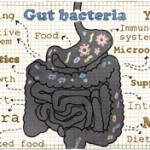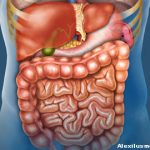“As a next step, we need more in-depth data,” he says by email. “For example, what are the major drivers of the trajectories, beyond corticosteroids, due to a clinical flare? This requires more frequent sampling. In the end, we are aiming to understand how we could maintain IBD patients in the healthy plane and how this will influence the disease course.”
Gastroenterologist Dr. Louis Cohen of The Mount Sinai Hospital in New York tells Reuters Health, “The individual variability of human microbial ecology makes it difficult to establish meaningful connections between bacterial populations and human health at one time point, making longitudinal studies such as this critical to the understanding of how bacterial ecology can predict disease pathophysiology or contribute to it.”
“The authors put forth an intriguing idea that there exists a healthy distribution of bacteria in stool and this ecology can vary over time to a certain degree,” he says by email.
“The most powerful finding is that perhaps even when in remission, patients with IBD have a highly dynamic bacterial ecology,” he notes. “Whether the instability of the microbiome is secondary to yet unknown confounders such as diet or is actually a meaningful observation about how host-microbial interactions shape the landscape of IBD pathophysiology remains to be determined.”
“The authors also suggest that maintaining IBD patients in a ‘healthy plane’ could prevent disease exacerbations,” Dr. Cohen continues. “While this may hold true, the authors’ own data suggests that IBD patients seem to deviate from this ‘healthy plane’ independent of traditional markers of inflammation like calprotectin. This suggests not a connection, but a disconnection between the healthy plane and inflammation in IBD.”
“Overall, this cohort of IBD patients appears relatively healthy—few patients on TNF inhibitors, generally low calprotectin values – and establishing a more definitive link between the healthy plane and IBD microbial ecology will likely take even more time, patients, and resources,” he observes.
“With that said, this study clearly is blazing the trail forward, laying a foundation for other researchers to build on and better determine how the human microbiome impacts health and disease,” Dr. Cohen concludes.
Reference
- Halfvarson J, Brislawn CJ, Lamendella R, et al. Dynamics of the human gut microbiome in inflammatory bowel disease. Nat Microbiol. 2017 Feb 13;2:17004. doi: 10.1038/nmicrobiol.2017.4.



